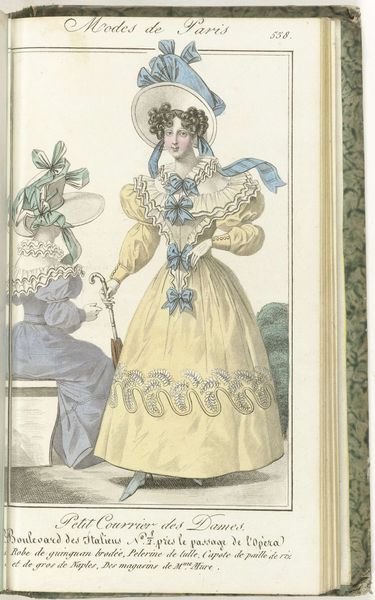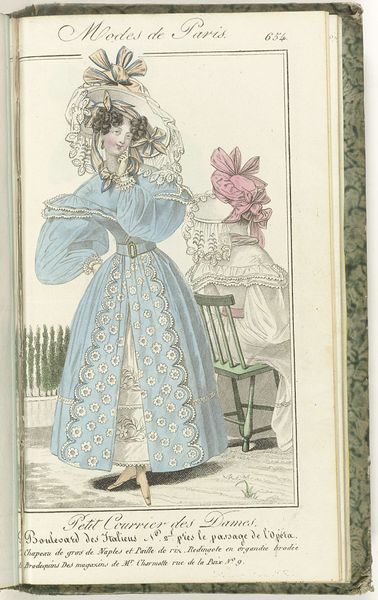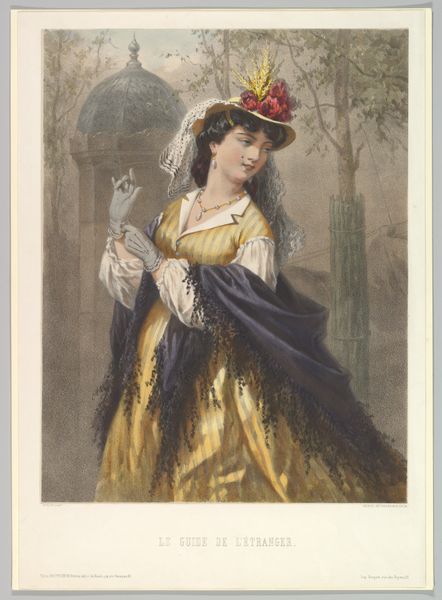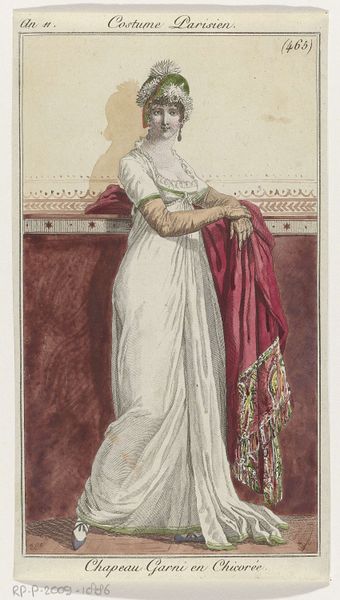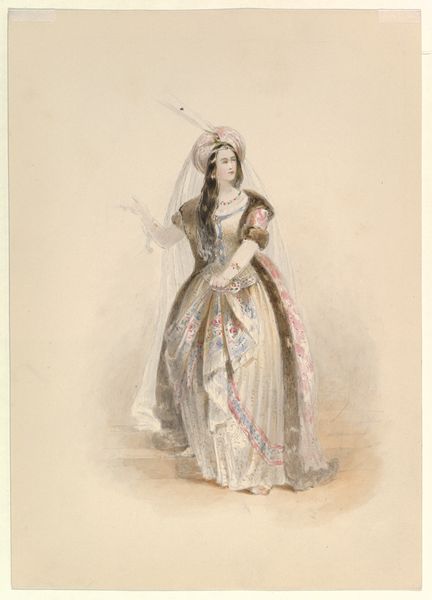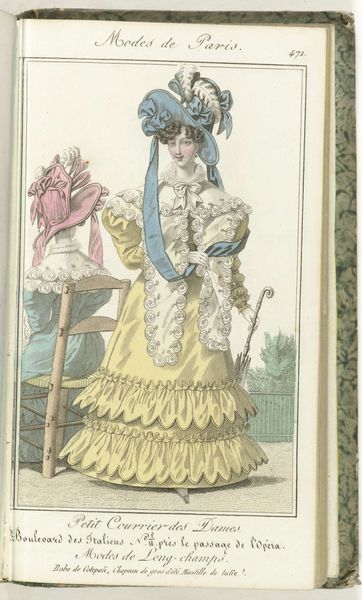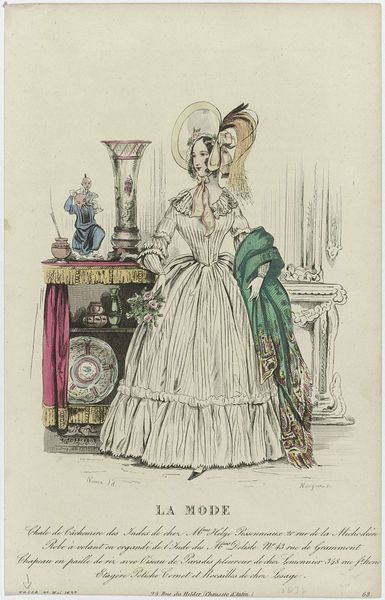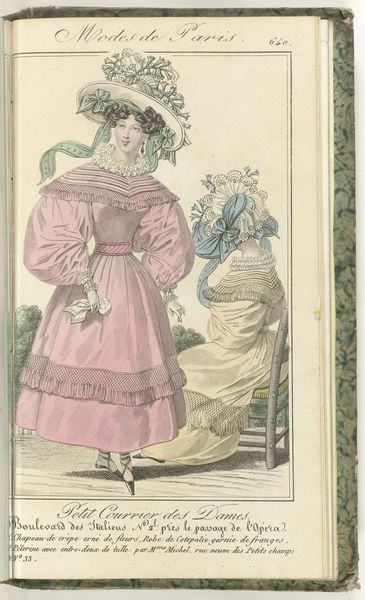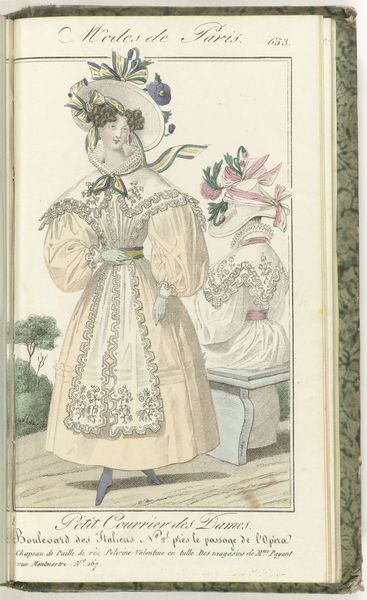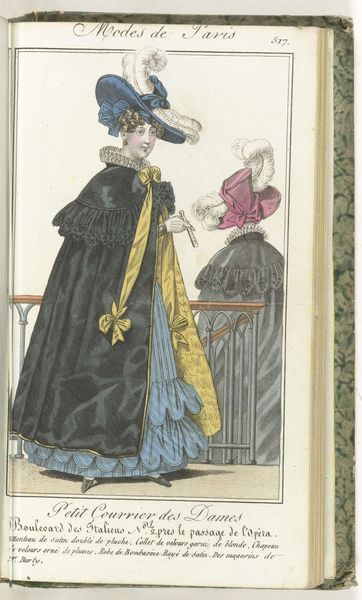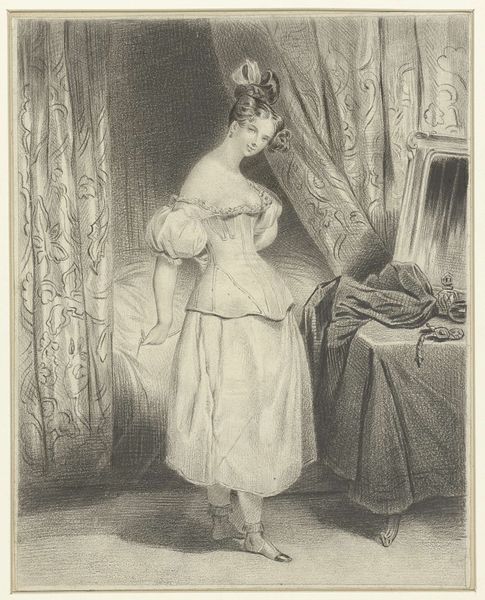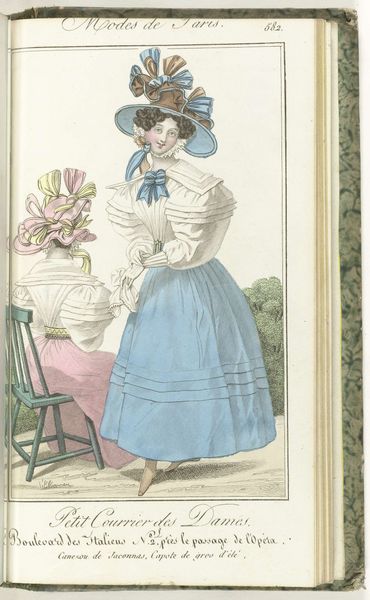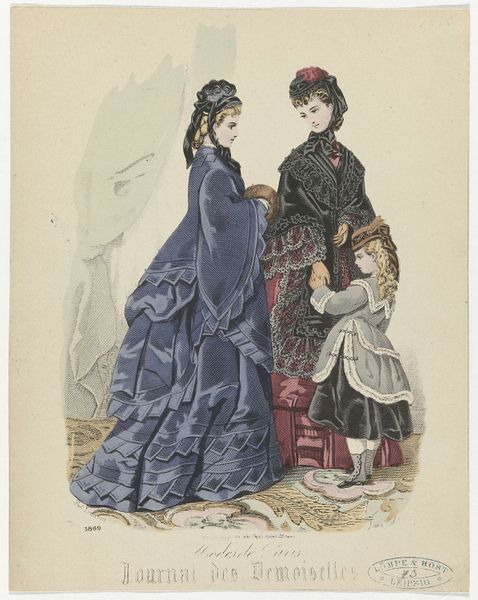
lithograph, print
#
portrait
#
lithograph
# print
#
figuration
#
oil painting
#
romanticism
#
france
#
history-painting
#
watercolor
Dimensions: 10 3/8 x 7 3/8 in. (26.35 x 18.73 cm) (sheet)
Copyright: Public Domain
Curator: At first glance, I feel an immediate pull toward a bygone era of formality and high society. Editor: You've got a good eye. We are looking at "Portrait of Mme. Menessier-Nodier" by Achille Devéria, a lithograph created in 1831, and currently held at the Minneapolis Institute of Art. The print is so evocative of early 19th-century French culture, when portraiture gained tremendous value in civic and personal spheres. Curator: Yes! It’s not just a likeness, is it? Her features—the downcast glance and somewhat parted lips—suggest an inner life carefully constructed, which tells me this is a commentary on feminine virtues of that era. Editor: Absolutely. The soft textures and the meticulous details of her dress, rendered in lithograph, invite us to analyze 1830s France, don't they? Especially considering the July Revolution had just overthrown the Bourbon monarchy. These depictions become a sort of silent archive, a curated representation of those in positions of privilege or authority. Curator: The fur stole wrapped around her is almost serpentine, visually and symbolically linking her to power but also to something perhaps… hidden? And observe the headpiece—lush flowers encircled by lace—as an indication of refined artifice and perhaps, ephemeral beauty. I suspect the artist also tried to imbue in this depiction the Romantic concept of genius, or a quality that can only emerge from within. Editor: The pose and costume certainly speak to an intention for Mme. Menessier-Nodier to convey her status. Yet, I believe the Romantic framing serves a more public purpose by asserting certain moral values—values which reflected, in a somewhat artificial manner, social order during the reign of Louis-Philippe I. What strikes me as somewhat radical, even by today’s standards, is the lack of an authoritative male counterpart—foregrounding this woman is already saying so much about societal shifts at this historical juncture. Curator: Very well observed. Devéria managed to create something incredibly potent through visual symbols. Seeing this now certainly feels like an encounter across centuries—linking then to now. Editor: Indeed. Works like this invite us to reflect on how the presentation of the self has changed – or hasn't – over time, especially in relation to prevailing social dynamics and historical contexts.
Comments
No comments
Be the first to comment and join the conversation on the ultimate creative platform.

